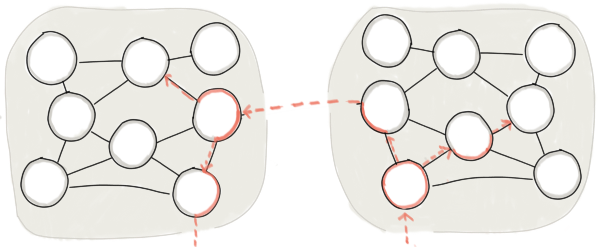People make products, from the moment someone starts taking action and follows up on an idea until an innovation made it into the market and beyond.

It is simple but we still forget it. We are involved in following processes, complying with regulations, thinking about solutions, optimizing backlogs, completing our daily chores and forget that the most important levers for successful innovation lies with those who are creating them.
This site approaches the topic innovation from a simple concept that emerged some years ago in a discussion between a couple of thinkers (namely Hilmar, Markus and Pete) at Sonova.
Introducing stars to road

Two quite simple concepts build the foundation:
- Ideas mature into products from stars to road and beyond.
- Ideas mature from a business, a technological and – most decisively – a passion or commitment side.
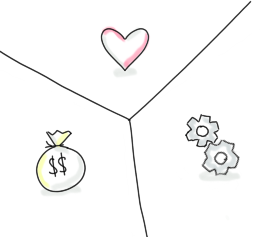
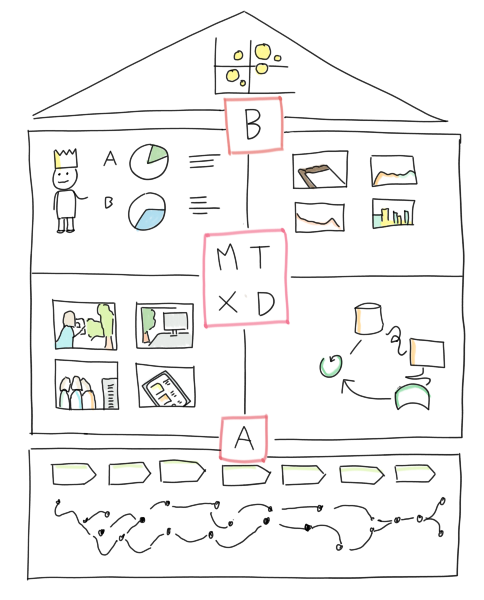
Teams and collaboration
People make products and they do that collaboratively, i.e. in teams.
Working in teams has been studied by psychologist over quite a long period of time. One important take away of these studies may well be that collaboration creates teams and thus that people have to invest into the team by working together rather than just leasing collaboration and split-up work: Collaboration – Buy or Lease?
Forming a team needs investment. You can increase productivity with a Speed Creation session. In addition, simple things like a team wall for agile knowledge management can really serve as a team booster. You could also consider slowing down, going for a walk and letting the brain do the work in a dialogue in the park. When working with partners you might find Lean Agile Procurement (lets collaborate with our partners!) and interesting approach.
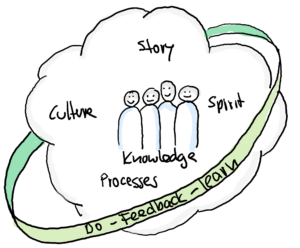
Sadly enough, team work and collaboration are not simple topics. Conflicts, personalities, past experiences make it difficult to work productively in a team.



The story of Bill & Chuck – and how they fight ideas into the market shows two stereotypes of persons, who go through a lot of trouble to push their ideas into the market and prevent that the “super-brain” called team forms well. You could also review the – slightly – exaggerated story of why Joey taped a picture of a cake to his wall and learn about difficulties ideas face when meeting people.
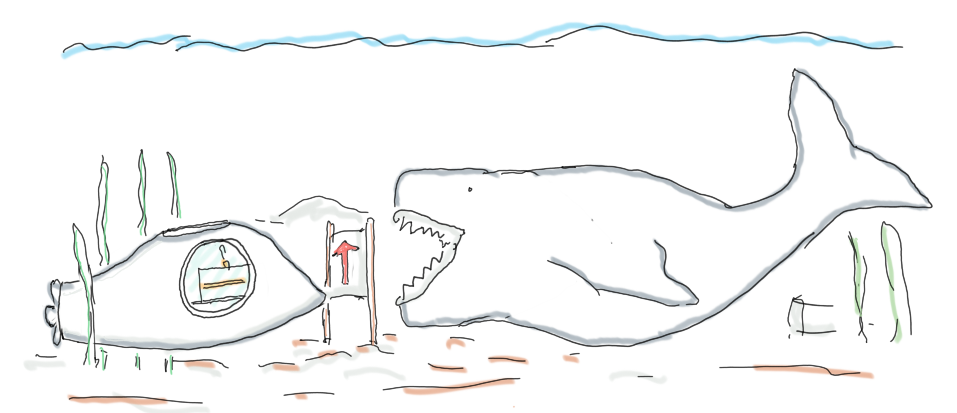
Teamwork can only bear fruit if the organization around supports it. Creating user experiences – an organizational view reports many approaches organizations take to create great user experiences. The thing is, those who create products and those who need, buy or use those products must join forces.
Agility to the rescue
You would thus expect that a more agile way of working could do the trick. At least the agile manifesto stresses the importance of teams and interactions. In the essence, creating products is all about a feedback loop between development team and stakeholders. The agile promise basically is to bring management, users and development teams closer together.

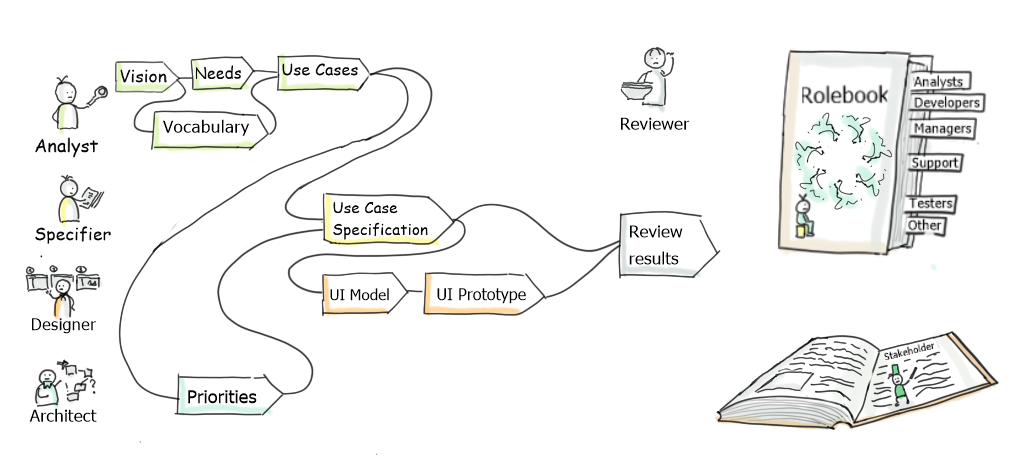
Reality shows a rather inconclusive picture about agility: Agility, Common Sense and Agilista Failings, Agile IS All About Process, and the big thing about SAFe all point towards a pitfall: Agile frameworks like Scrum and SAFe teach how to create well oiled garbage-in-garbage-out machines. They focus organisations on processes and maintaining backlogs. Agile process frameworks may be an extremely helpful for an user-centered, interaction driven team. They are however fatal for an artifact based team. Agile conversation or requirements engineering takes a closer look at these two team setups.
The dark side of team-work: burn-out systems
The Team Squeezer or the story of an agile transition introduces the concept of a burn-out system. The Team Squeezer is just one of many possible burn-out systems in which the worst of all team disorders, Featuritis, emerges. Participants of the burn-out machine game @ agile breakfast in Zürich had the opportunity to experience such a burn-out system and the story of Rahel in UX in a burn-out system tells you the fate of any UX person in such a system.


Studying burn-out systems could be valuable for an organisational psychotherapist. If this profession does not exist yet, it probably should. From my side, being involved in product developments without the power of therapy, burn-out systems are still insightful: The patterns the burn-out system exploits to thrive are in many situations anti-pattern of effective team work. Burn-out systems show us the the dark side of teams and thus tell us what to work against.
Organize for innovation
From an organisational point of view, It is about creating a culture, where ideas can spark, gain momentum, and mature and where organisation can decide about killing and curing, as outlined in four skills of innovative companies.
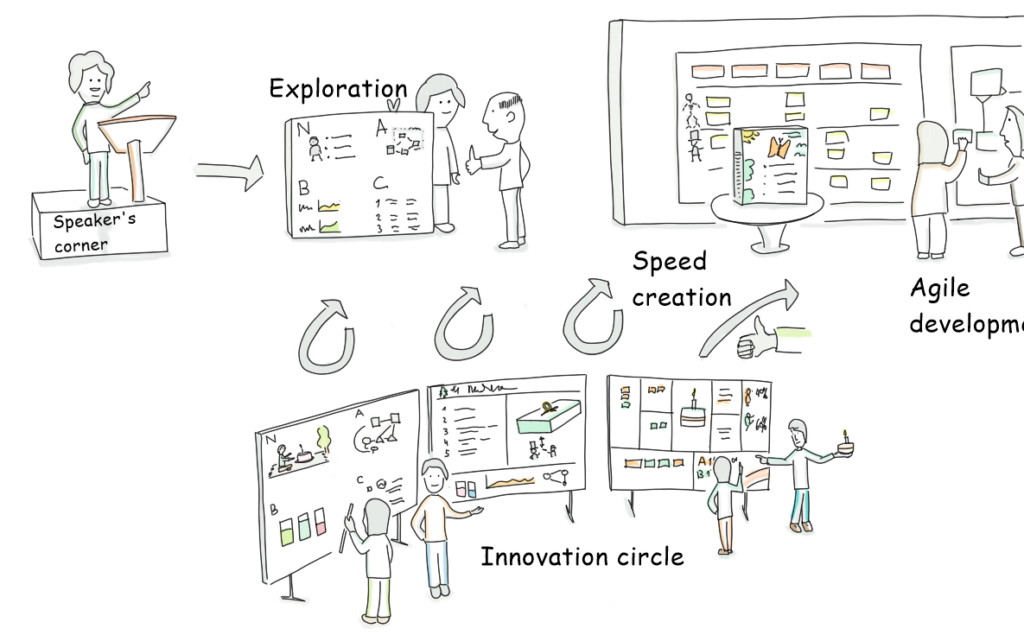
In an innovation process, some explicit points like a speakers corner, an innovation circle and more, see agile innovation from Stars to Road, can change how collaboration happens. Let ideas meet people. Creating user experiences – an organizational view, gives hints and some thoughts how to make an organization deliver products with a great user experience.
Creating products that make sense
Sense-making, inspiring purpose or giving teams a common goal is the most important motivator for knowledge workers. Powerful Stories are meant just for. The case of a relevant UX problem gives a glimpse of a real life development where such a story made a huge difference.
Having a powerful story allows also to split up development in chunks, so called business scenarios (Business scenarios and 6 slicing patterns for product owners). With these, the team can align the development effort of a product with the significant business and market events.
Powerful stories usually result from hard work. They stem e.g. from an understanding of customers, users and fans. Thus a team meets with users to create great products. And in this process the team experiences the future so it can kill or cure an idea. It is all about getting reliable feedback about what the future will bring! The user experience flow from stars to road outlines how ideas mature from a user perspective. Teams thusly learn about exciters and liabilities, i.e. categories of what customers and users expect from a product.
The Stars to Road agile innovation toolbox lists some techniques we find valuable. Obviously, some tools (e.g. maturity tools for product owners) are specifically suited to assess and work with maturity. Grok – negotiate – build up is the pattern, successful development teams apply in one or the other way: Grok the market, negotiate value versus cost and build quality.
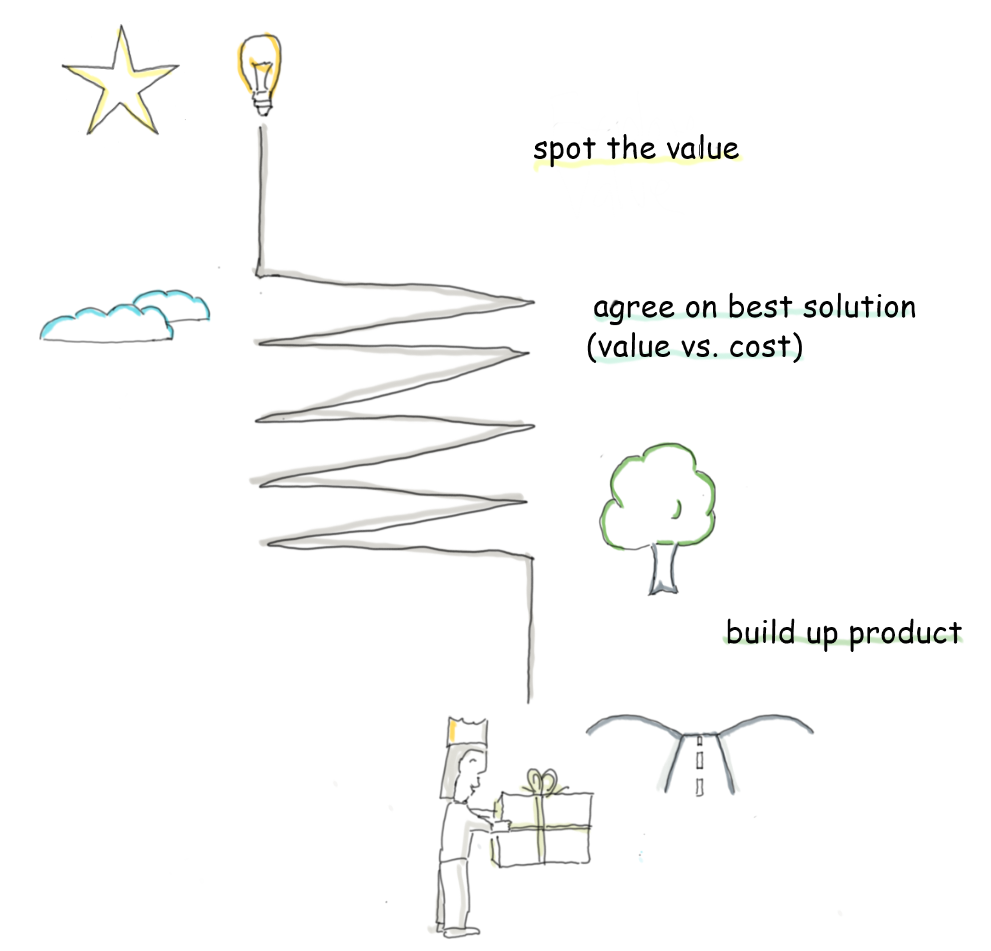
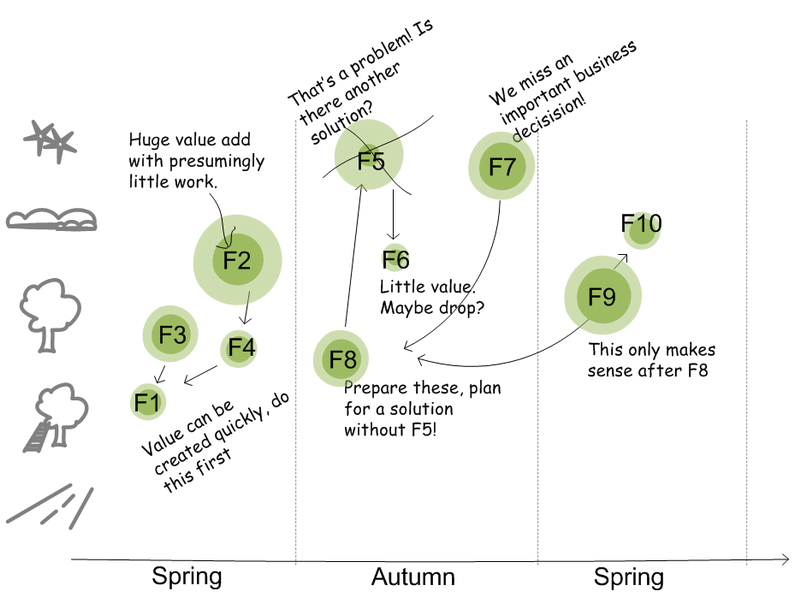
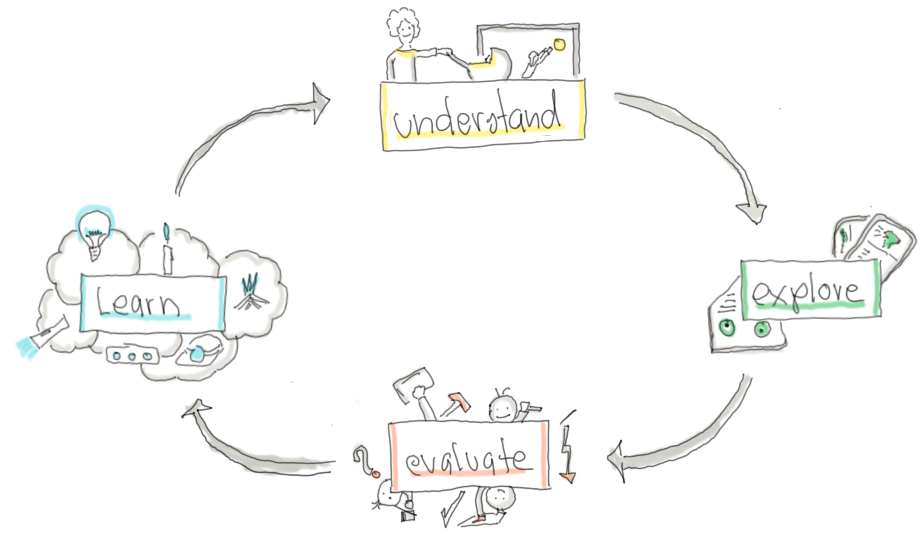
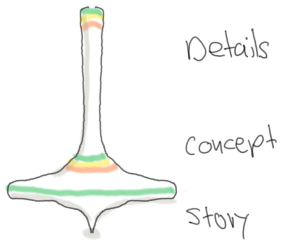
- Money and time is always shorter than ideas. Focusing on the essentials is what keeps a team sane. User story shopping – a sports event management system gives a glimpse on how user story mapping and story shopping can help. In the same team, the following five or one guidelines for the minimal viable product helped to keep the development in time and budget. The one guideline, by the way, is to have a deep understanding why stakeholders are going to love the solution. Knowing such things helps in making the hard in-out decisions.

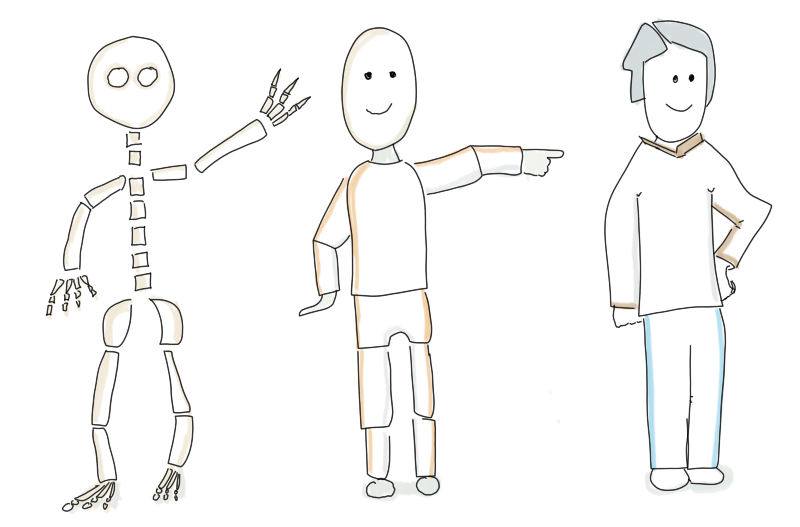
The purpose of
A last remark: People invent things with a specific purpose in mind (the purpose of …). If you use something for a different purpose it may well not work.
